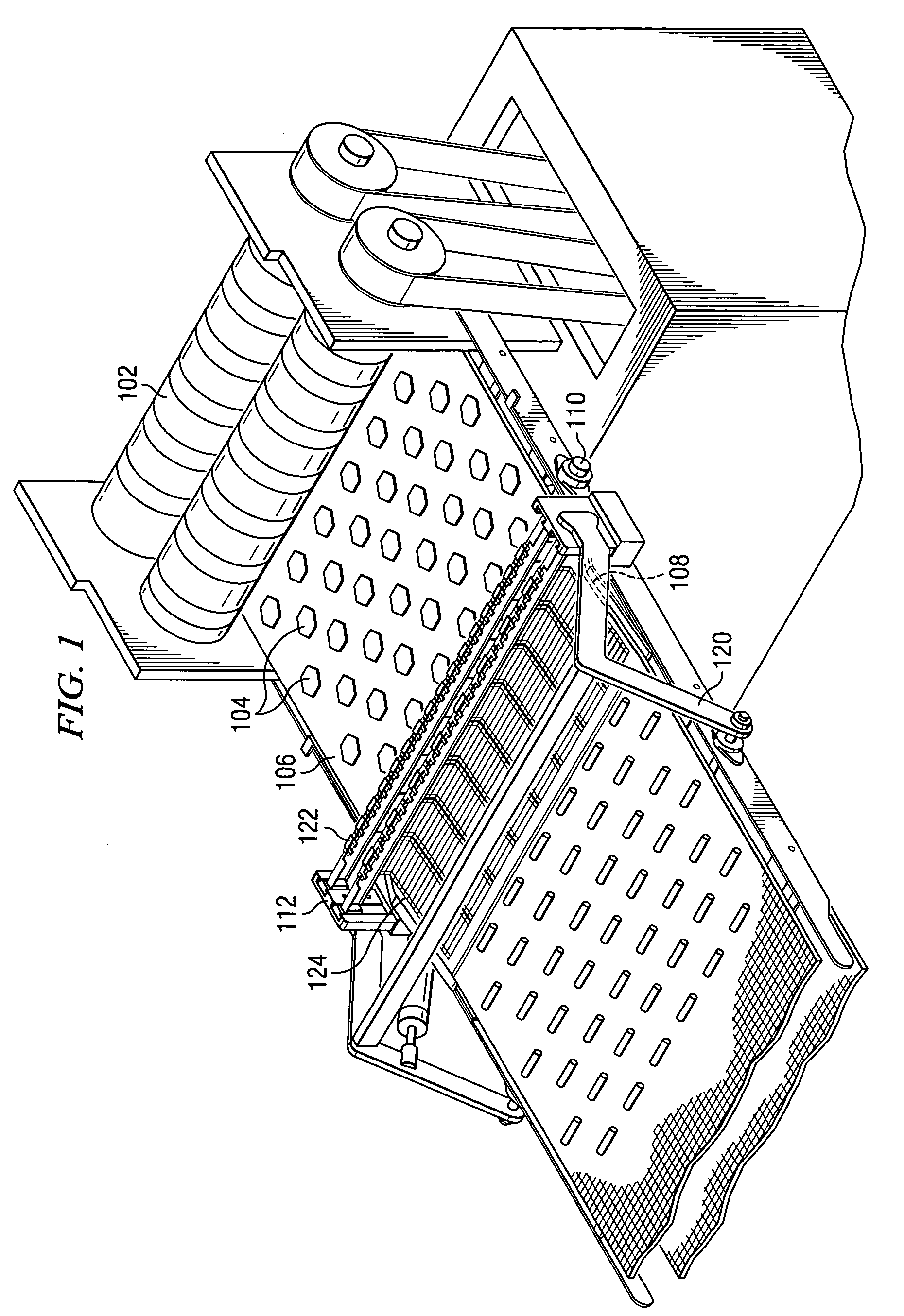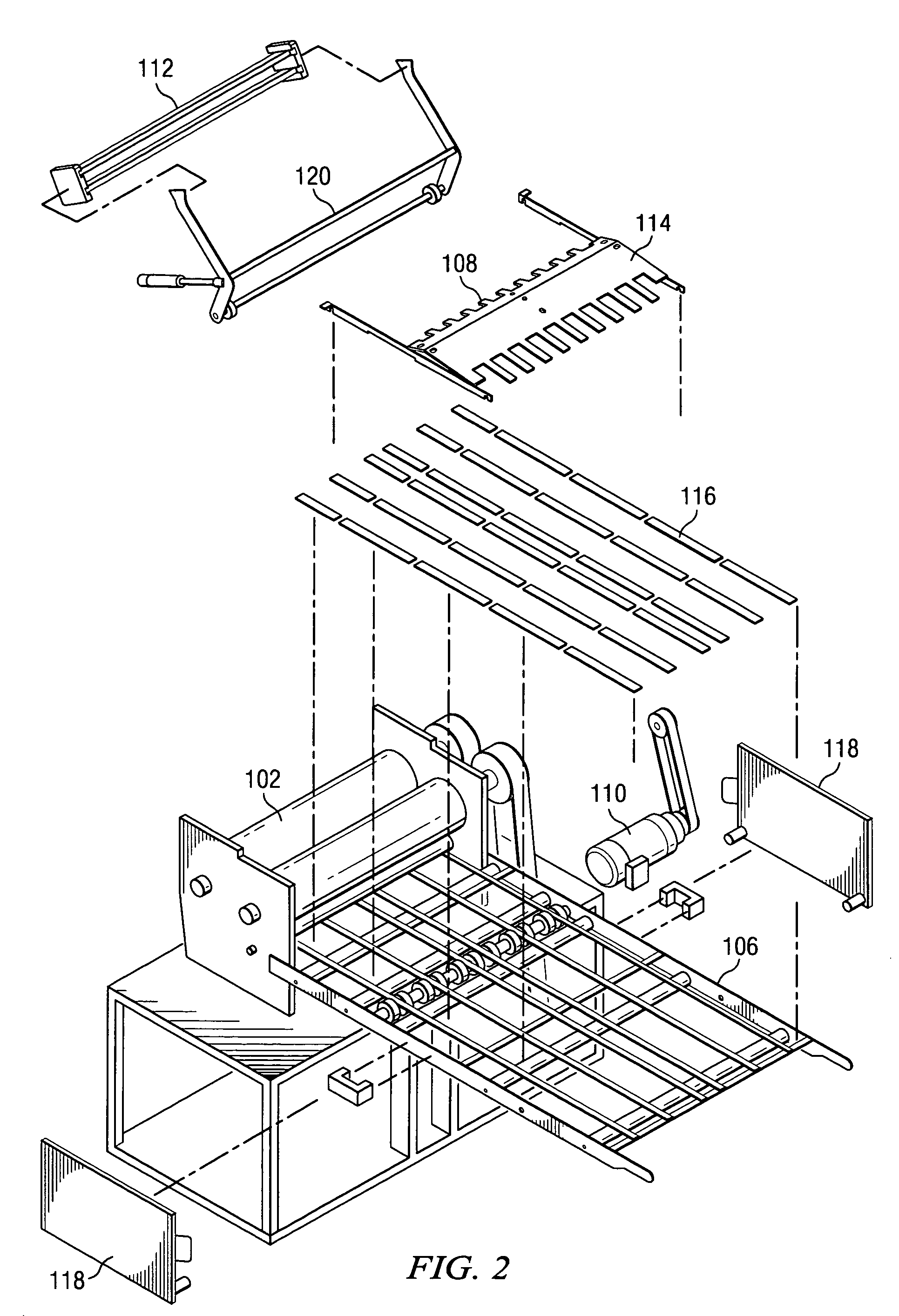Dough rolling apparatus and method
a technology of dough rolling and dough tubes, which is applied in the field of dough rolling apparatuses, can solve the problems of high rate inability to meet the requirements of snack food industry, etc., and achieve the effect of affecting the rolling behavior of dough pieces
- Summary
- Abstract
- Description
- Claims
- Application Information
AI Technical Summary
Benefits of technology
Problems solved by technology
Method used
Image
Examples
Embodiment Construction
[0028]While the invention is described below with respect to a preferred embodiment, other embodiments are possible. The concepts disclosed herein apply to other systems for producing sheeted products.
[0029]System Overview—FIG. 1 is a perspective view of a dough-rolling apparatus in accordance with one embodiment of the present invention, and FIG. 2 is a perspective view of several of the main elements of such an apparatus. The dough-rolling apparatus is capable of rolling most varieties of doughs including but not limited to: potato, rice, corn-based doughs, and wheat-based doughs. At the front end of the apparatus is a sheeting device 102, which appears on the far right side of FIG. 1 and the far left side in FIG. 2. In a preferred embodiment, the sheeter 102 comprises an industrial combination sheeter-and-cutter such as, but not limited to, a Casa Herrara 39-inch, eight-row corn masa sheeter. A separate dough pre-form cutter, however, can instead be positioned downstream from a s...
PUM
| Property | Measurement | Unit |
|---|---|---|
| diameter | aaaaa | aaaaa |
| length | aaaaa | aaaaa |
| outer diameter | aaaaa | aaaaa |
Abstract
Description
Claims
Application Information
 Login to View More
Login to View More - R&D
- Intellectual Property
- Life Sciences
- Materials
- Tech Scout
- Unparalleled Data Quality
- Higher Quality Content
- 60% Fewer Hallucinations
Browse by: Latest US Patents, China's latest patents, Technical Efficacy Thesaurus, Application Domain, Technology Topic, Popular Technical Reports.
© 2025 PatSnap. All rights reserved.Legal|Privacy policy|Modern Slavery Act Transparency Statement|Sitemap|About US| Contact US: help@patsnap.com



